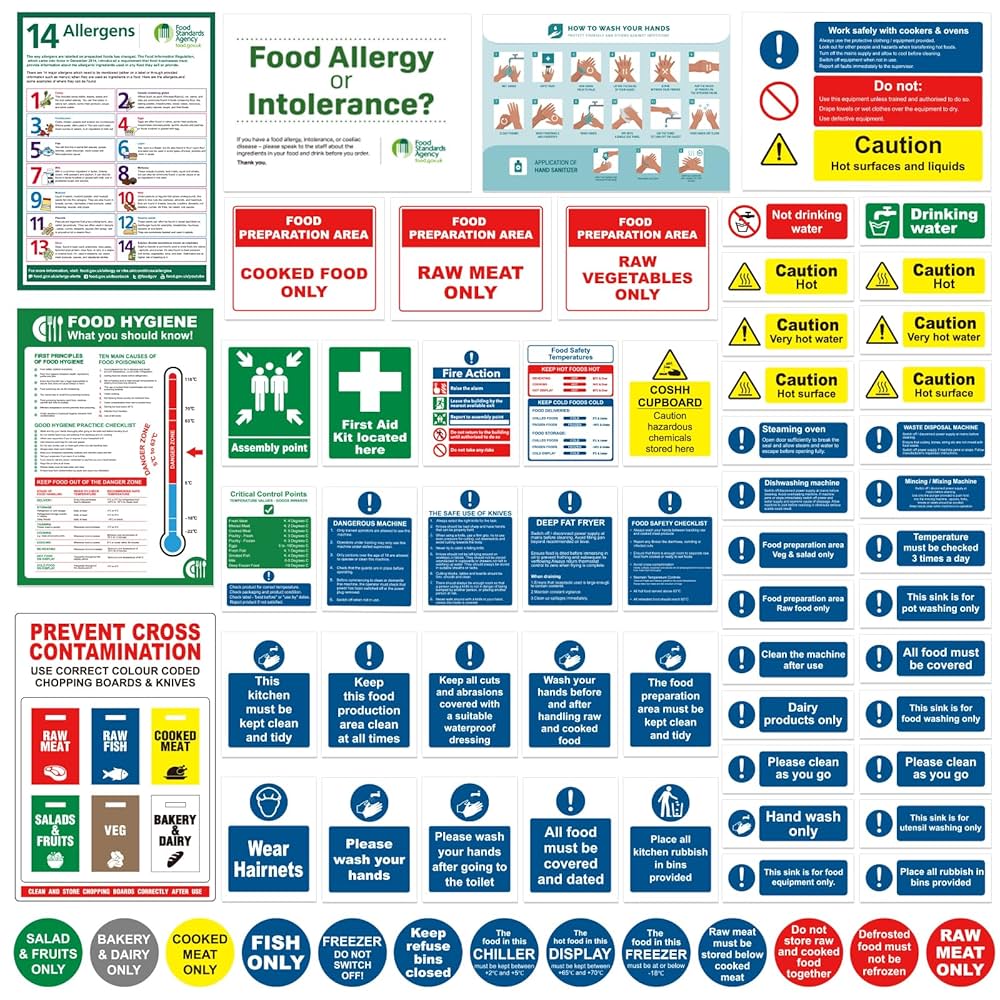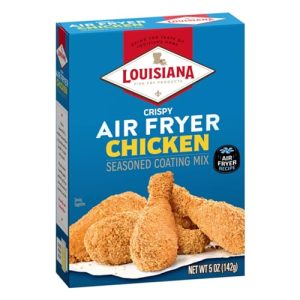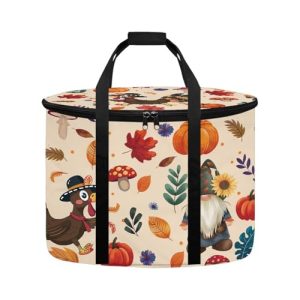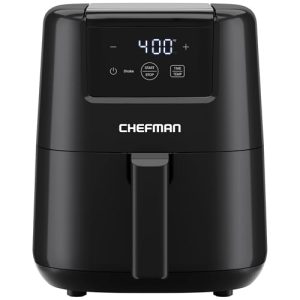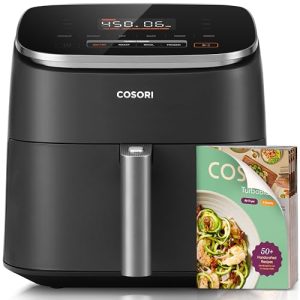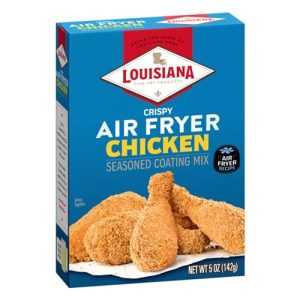Picture this: You’re running a bustling commercial kitchen, where every dish must not only be delicious but also safe. The stakes are high.
A single lapse in health and safety can lead to disastrous consequences, affecting your customers, reputation, and bottom line. But what if you could ensure your kitchen is a model of safety and hygiene, all while running it efficiently? Commercial kitchen health and safety isn’t just about following rules; it’s about creating an environment where everyone feels secure and confident.
It’s about understanding the simple yet crucial practices that protect your team and your patrons. As you dive deeper into this guide, you’ll discover practical tips and insights that can transform your kitchen into a safe haven. Because, let’s face it, peace of mind is as essential as the ingredients you use. So, are you ready to make your kitchen safer and more successful than ever? Let’s get started.

Credit: www.getknowapp.com
Importance Of Health And Safety
The importance of health and safety in a commercial kitchen is undeniable. A safe kitchen ensures the well-being of both staff and customers. It prevents accidents, reduces risks, and promotes a healthy environment. Maintaining high health standards is crucial for any food establishment. Ensuring safety also boosts staff morale and productivity. This section explores why health and safety are vital in commercial kitchens.
Understanding Health And Safety Regulations
Commercial kitchens must follow strict health and safety regulations. These rules protect workers from potential hazards. They also ensure food is safe for consumption. Failing to comply can lead to serious consequences. Businesses may face fines or even closure. Understanding these regulations is key to maintaining a safe kitchen.
Preventing Accidents And Injuries
Accidents in kitchens can be severe. Slips, cuts, and burns are common. A focus on safety reduces these risks. Proper training and equipment can prevent most accidents. Staff should know how to handle emergencies. A safe kitchen is a productive kitchen.
Ensuring Food Safety
Food safety is crucial in any kitchen. Contaminated food can harm customers. This can damage a business’s reputation. Following food safety guidelines prevents contamination. Regular checks and proper storage are essential. Ensure cleanliness to keep food safe.
Boosting Employee Morale And Productivity
Safe working conditions boost employee morale. Happy workers are more productive. They feel valued and secure in their environment. This leads to better service and quality. A focus on safety benefits everyone.

Credit: praxis42.com
Common Hazards In Commercial Kitchens
Commercial kitchens can be dangerous places. With sharp tools, hot surfaces, and busy staff, hazards are everywhere. Understanding these risks helps keep everyone safe. It’s important to know what to watch out for. Let’s explore some common dangers.
Fire Risks
Fire is a real threat in any kitchen. Flames from stoves and ovens can ignite grease. Poor ventilation makes the risk higher. Regular cleaning of exhaust systems helps prevent fires. Staff should know how to use fire extinguishers. Fire alarms must be tested often. Training on fire safety is crucial.
Slips And Falls
Wet floors cause many accidents. Spills must be cleaned right away. Non-slip mats help prevent falls. Shoes with good grip are essential for staff. Watch out for cluttered walkways. Proper lighting reduces the risk of accidents. Regular checks of the floor can keep everyone safe.
Cuts And Burns
Sharp knives and hot surfaces are common in kitchens. Cuts occur when tools are not handled properly. Staff must use the right techniques when cutting. Burns happen from hot pans and surfaces. Oven mitts should be used for protection. Training in first aid helps treat injuries quickly.
Safe Food Handling Practices
Ensuring safe food handling practices in a commercial kitchen is vital for the health and safety of everyone involved, from the staff to the customers. You’ve likely seen the signs in restaurants about washing hands and preventing foodborne illnesses. But what does it actually mean to handle food safely? It’s more than just wearing gloves. It involves understanding how to store food properly, prevent cross-contamination, and control temperatures. Let’s dive into the details that can make or break a kitchen’s reputation.
Preventing Cross-contamination
Cross-contamination is a silent enemy in any kitchen. Have you ever noticed how raw chicken is handled separately from vegetables? This isn’t just a guideline—it’s a rule. Use different chopping boards for raw meats and fresh produce. Keep utensils separate, and always wash your hands after touching raw food. This simple practice can prevent harmful bacteria from spreading.
Another tip is to keep an eye on your cleaning cloths. They can harbor germs if not changed frequently. Consider using disposable paper towels or color-coded cloths to keep track of what’s used for what. What steps can you take today to improve your kitchen’s cleanliness?
Proper Food Storage
How food is stored plays a huge role in its safety. Have you ever opened a fridge to find it packed without rhyme or reason? Organize your fridge and pantry with clear labels and expiration dates. Store meats at the bottom of the fridge to prevent their juices from dripping onto other foods.
Use airtight containers to keep foods fresh and prevent contamination. Regularly check your storage spaces for expired items. This can be a game-changer in maintaining a safe kitchen environment. What’s one thing you can adjust in your storage practices right now?
Temperature Control
Temperature is crucial when it comes to safe food handling. Have you ever wondered why certain foods need to be kept cold or cooked at specific temperatures? It’s all about preventing bacterial growth. Keep your refrigerator below 40°F (4°C) and your freezer at 0°F (-18°C).
When cooking, ensure meats reach their required internal temperature, using a food thermometer for accuracy. This isn’t just a suggestion; it’s essential for health safety. Can you recall a time when you double-checked the cooking temperature for peace of mind?
Safe food handling is not just about rules; it’s about creating a culture of safety. Implementing these practices helps protect your customers and your team. What steps will you take to enhance your kitchen’s health standards today?
Equipment Safety Measures
Ensuring equipment safety in a commercial kitchen is crucial for health and safety. Regular maintenance and proper staff training prevent accidents and ensure compliance with safety regulations. Using protective gear like gloves and aprons helps protect staff from burns and cuts.
Ensuring safety in a commercial kitchen is crucial. Equipment safety measures play a significant role in maintaining a secure environment. Proper handling and maintenance of kitchen appliances not only prevent accidents but also prolong their lifespan. Whether you’re a seasoned chef or new to the kitchen, understanding these measures can make all the difference.Maintenance And Inspection
Regular maintenance and inspection of equipment are essential. Schedule routine checks for all your kitchen appliances. This helps identify any wear and tear before it becomes a hazard. Keep a checklist handy. Document each inspection and maintenance activity. This record will be invaluable if issues arise later. Consider this: a chef once ignored a minor issue with a mixer, thinking it was insignificant. That oversight led to a costly repair and downtime. Don’t let minor problems grow. Address them promptly.Safe Use Of Appliances
Using appliances safely is a skill that every kitchen worker should master. Always read the manufacturer’s instructions before operating any new equipment. It’s surprising how many users skip this step. Train your staff. Hold regular workshops on the safe use of kitchen appliances. This ensures everyone knows how to handle equipment correctly. Remember to unplug appliances when not in use. This simple act can prevent electrical hazards. A kitchen attendant once shared how unplugging saved them from a potential fire. It’s a habit worth adopting. As you navigate these safety measures, ask yourself: Are your current practices sufficient? If not, what changes can you implement today? By focusing on equipment safety measures, you protect not only your staff but also your business. How will you ensure your kitchen remains a safe place to create culinary magic?Personal Protective Equipment (ppe)
Ensuring safety in commercial kitchens is crucial. Personal Protective Equipment (PPE) plays a vital role in maintaining health and safety standards. PPE protects workers from physical hazards. It minimizes risks from sharp tools, hot surfaces, and slippery floors. Understanding the right use of PPE enhances workplace safety.
Types Of Ppe
Different PPE types serve specific purposes in a kitchen. Gloves protect hands from burns and cuts. Aprons shield the body from hot spills and splashes. Non-slip shoes prevent falls on wet floors. Hairnets keep food contamination at bay. Each piece of equipment has its distinct function.
When To Use Ppe
Using PPE at the right time is crucial. Wear gloves while handling sharp knives. Aprons are essential during cooking and serving hot dishes. Slip-resistant shoes should be worn at all times. Hairnets are necessary in food preparation areas. Correct usage enhances safety and hygiene.

Credit: en.specifiglobal.com
Emergency Procedures
Commercial kitchens require clear emergency procedures to ensure health and safety. Quick actions can prevent injuries and reduce hazards. Staff should know how to handle fires, spills, and equipment malfunctions efficiently.
In the fast-paced environment of a commercial kitchen, emergencies can arise without warning. Having a well-structured emergency procedure is not just a regulatory requirement, it’s a lifeline for your staff and customers. Ensuring everyone knows what to do in case of an emergency can make all the difference. Let’s delve into two critical components of emergency procedures: fire safety plans and first aid response.Fire Safety Plans
A fire in a kitchen can escalate quickly. It’s crucial to have a fire safety plan that everyone understands. This plan should include: – Clearly marked fire exits: Ensure that these are never blocked and are accessible at all times. – Regular fire drills: Practice makes perfect. Regular drills help staff react swiftly and calmly. – Fire extinguishers and blankets: These should be easily accessible and staff should be trained on how to use them. Have you ever been in a fire drill where confusion reigned? Imagine that happening during a real fire. It’s vital that each team member knows their role and can execute it without hesitation.First Aid Response
In a bustling kitchen, accidents can occur. Cuts, burns, or falls are not uncommon, and having a first aid response ready is essential. Your first aid procedures should include: – Trained first aiders: Ensure that several staff members are trained in first aid. This spreads the responsibility and ensures coverage across shifts. – Accessible first aid kits: Kits should be well-stocked and checked regularly for expired supplies. – Clear reporting protocols: After an incident, make sure there’s a process for reporting and documenting injuries. Consider the last time you saw someone get a cut in the kitchen. Did they know where the first aid kit was? Did they know who to call for help? Clear, practiced protocols can prevent a minor accident from becoming a major incident. Emergencies are unpredictable, but your response shouldn’t be. Is your kitchen prepared to handle the unexpected? Think about the steps you can take today to enhance your emergency procedures. Implement these strategies and you will create a safer environment for everyone involved.Training And Compliance
Ensuring health and safety in commercial kitchens demands thorough training and compliance. Proper food handling, equipment use, and cleanliness are crucial. Regular inspections and staff education help maintain a safe working environment, reducing risks and promoting well-being.
Ensuring the health and safety of a commercial kitchen is more than just a regulatory requirement—it’s a commitment to providing a safe environment for employees and customers. Training and compliance are integral to this mission. They not only help reduce accidents but also enhance the efficiency and reputation of your establishment.Employee Training Programs
Effective employee training programs are the backbone of a safe kitchen. These programs should be clear, practical, and continuous. Regular sessions can help employees understand the importance of hygiene, safe food handling, and emergency procedures. Imagine a busy Friday night where a new employee knows exactly how to handle a potential hazard because of comprehensive training. Wouldn’t that be a relief? When everyone knows what to do, the kitchen runs like a well-oiled machine. Incorporate hands-on training and real-life scenarios to make learning engaging. This approach not only makes the information stick but also boosts confidence among staff. Have you considered offering refresher courses or recognizing outstanding safety practices? Small incentives can go a long way.Regulatory Standards
Navigating the maze of regulatory standards might seem daunting, but it’s essential for compliance. These standards are put in place to protect everyone involved. Familiarizing yourself with local health department requirements is a great start. Creating a checklist of the latest regulations can help ensure nothing slips through the cracks. How often do you review your compliance with these standards? Regular audits and inspections can prevent costly fines and ensure your kitchen stays open. Share updates and changes in regulations with your team. In the dynamic world of food service, keeping everyone informed can be a challenge, but it’s crucial. By doing so, you not only maintain compliance but also instill a culture of accountability and safety. Training and compliance in a commercial kitchen are not just about ticking boxes. They are about building a culture of safety and responsibility. Are you ready to make that commitment?Implementing A Safety Culture
Implementing a safety culture in a commercial kitchen is not just about ticking boxes or fulfilling legal requirements. It’s about creating an environment where everyone feels responsible for their safety and the safety of others. When you foster this culture, you not only minimize accidents but also boost morale and productivity. Imagine a kitchen where everyone is vigilant, where safety is second nature, and where every team member feels empowered to speak up about concerns.
Encouraging Reporting
One of the cornerstones of a safety culture is encouraging open reporting. Without fear of repercussions, your staff should feel comfortable sharing concerns or incidents. This requires trust and transparency from management. Have you ever felt hesitant to report something because of possible backlash? Imagine how many small issues could escalate without open communication. You could introduce anonymous reporting methods or regular safety meetings where everyone can express their thoughts.
Continuous Improvement
Safety culture isn’t static; it evolves. By regularly reviewing safety practices, you invite continuous improvement. Think of it as a commitment to betterment rather than a fixed set of rules. What safety improvements have you witnessed in your workplace? Regular training sessions and workshops can keep everyone updated on the latest protocols. This proactive approach ensures your kitchen adapts to new challenges and risks.
Creating a safety culture in your kitchen is a journey, not a destination. It’s about making safety a living, breathing part of your daily operations. What steps will you take today to nurture this culture in your own environment?
Frequently Asked Questions
What Are 5 Kitchen Safety Rules?
1. Keep knives sharp for safer cuts and less slipping. 2. Clean up spills immediately to avoid falls. 3. Store heavy items on lower shelves to prevent accidents. 4. Use oven mitts to protect hands from burns. 5. Turn pot handles inward to prevent accidental knocks.
What Are The Hazards In Commercial Kitchens?
Commercial kitchens face hazards like slips, cuts, burns, fires, and exposure to chemicals. Proper safety measures reduce risks.
What Are The 4 C’s Of Kitchen Safety?
The 4 C’s of kitchen safety are: Clean surfaces and hands, Cook food thoroughly, Chill promptly, and Cross-contamination avoidance. These steps ensure food safety and prevent illness. Implementing them helps maintain a hygienic cooking environment, protecting against harmful bacteria and ensuring safe meals.
What Is The Nfpa Standard For Commercial Kitchens?
The NFPA 96 standard governs fire safety for commercial kitchens. It covers ventilation control and fire suppression systems. Ensure compliance for safety and efficiency. Regular inspections and maintenance are crucial. This standard helps prevent fire hazards and ensures safe kitchen operations.
Always follow NFPA 96 guidelines for optimal safety.
Conclusion
Ensuring health and safety in commercial kitchens is crucial. It protects everyone involved. Regular inspections help maintain cleanliness and safety. Proper training for staff reduces accidents. Safe food handling prevents contamination and illness. Keep equipment in good working order. This reduces risks and ensures efficiency.
Use clear labels for hazardous materials. This prevents accidents and improves safety. Encourage staff to report hazards immediately. A safe kitchen boosts employee morale. It also builds customer trust. Prioritize safety to create a productive work environment. A safer kitchen means happier employees and satisfied customers.
Always make health and safety a top priority.
